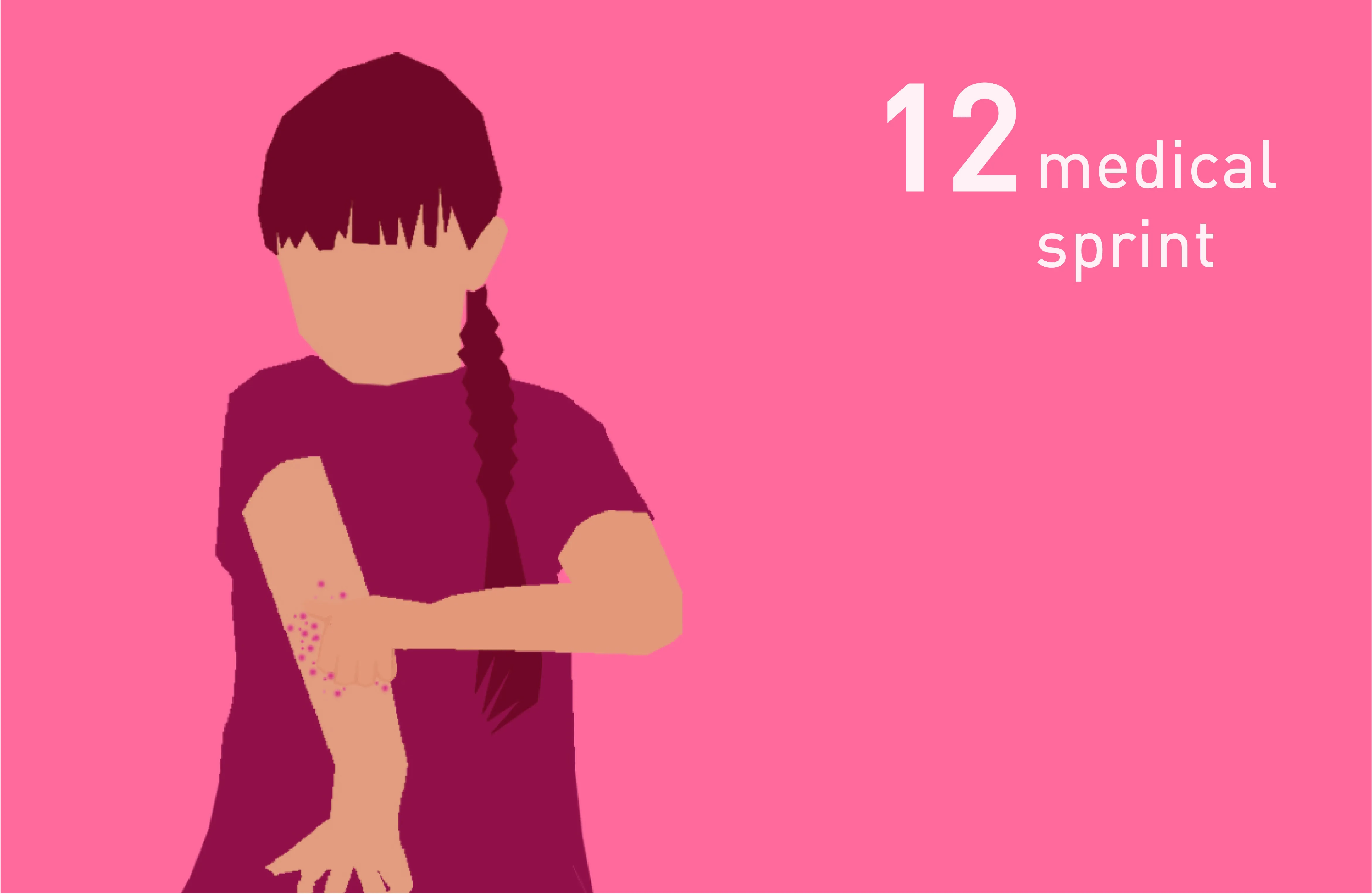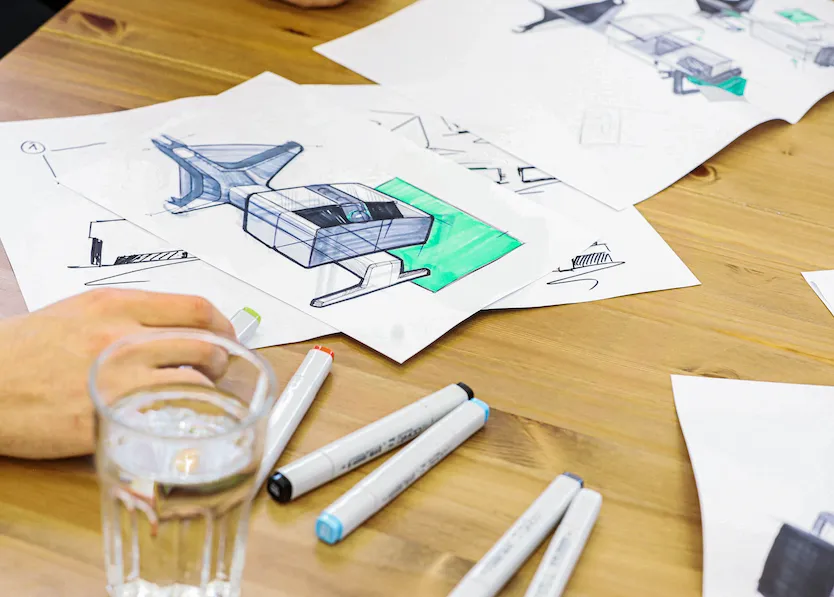Perspective
Itch relief for atopic dermatitis in children | Design Sprint 12
The design for the TIR bracelet was completed by Darius Fernandes in a month-long design sprint. The industrial design student from the UK investigated the establishment of behavioral habits to combat skin diseases and the detailed design of shape and color to create an appealing product.
Atopic dermatitis, also known as atopic eczema or neurodermatitis, is a chronic skin disease characterized by itchy, dry and inflamed skin. The disease mainly affects children, of which 15-20 percent are affected worldwide, but one to three percent of adults can also be affected.
The cause of atopic dermatitis is not fully understood, but it is believed that both genetic and environmental factors play a role. Some risk factors for developing the condition include allergies, asthma, a family history and a compromised skin barrier.
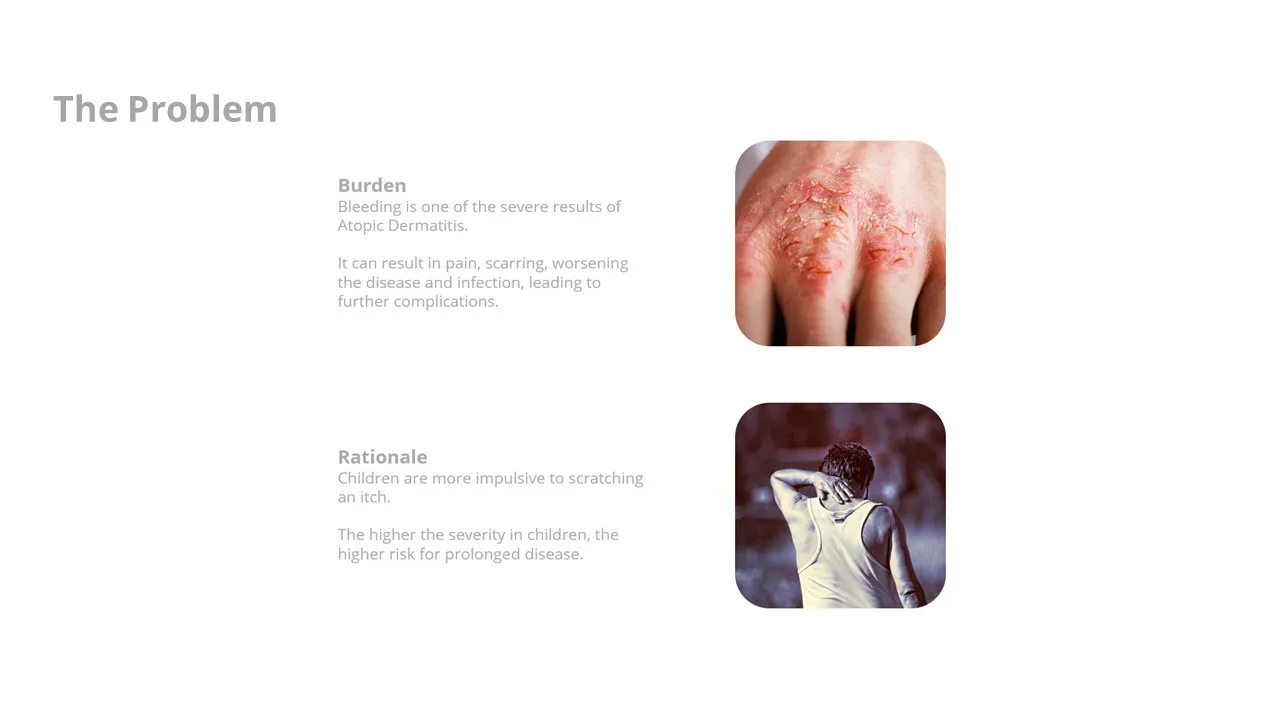
The cornerstone of the project is based on a primary research approach in which Darius approached those affected and interviewed them about their personal experiences. Thematic data analysis and cross-referencing with secondary data helped to identify significant problem areas for ideation. Throughout the process, Darius was able to find support from colleagues in the company to get feedback and suggestions from experienced designers.
The design of the TIR bracelet places particular emphasis on a child's perspective and includes aspects such as discretion and the ability to "grow" with the child. The design process involved researching ergonomic design elements, creating concept sketches and physical models, and using CAD and visual renderings to realize the concept.

Design details:
Depending on the user's preference, different structures can be chosen to relieve itching. With a minimal and non-suggestive shape, the product is an accessory that can be worn on the wrist all day long. The use of the product is discreet and reduces the shame of those affected, who use it to combat the constant itching.


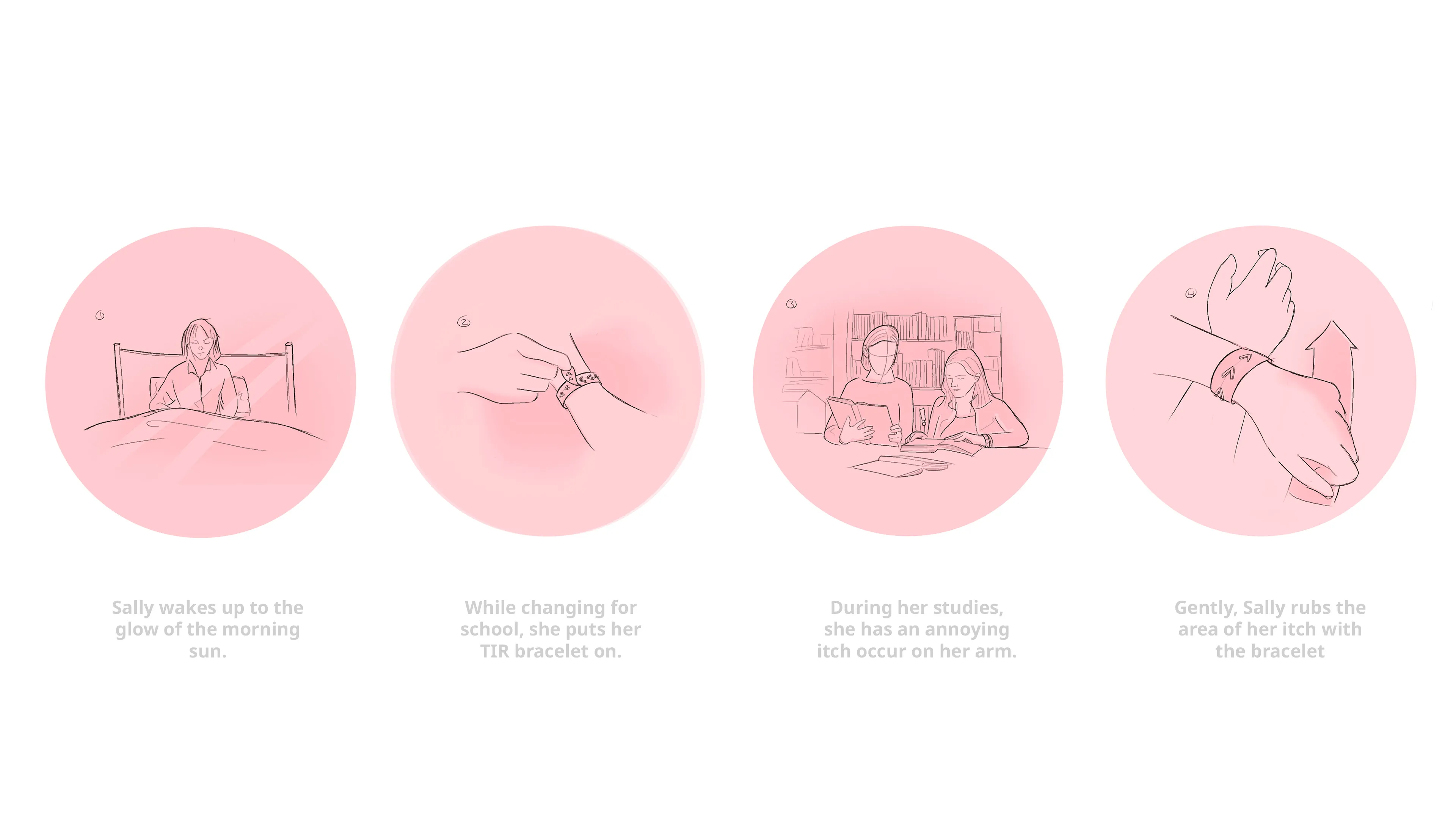

The consideration of colors was important to create a visually appealing product. One aim of the project was to give users the opportunity to express themselves when using the bracelet. The design in pastel shades and color gradients gives those affected a variety of choices that they can make according to their personality.
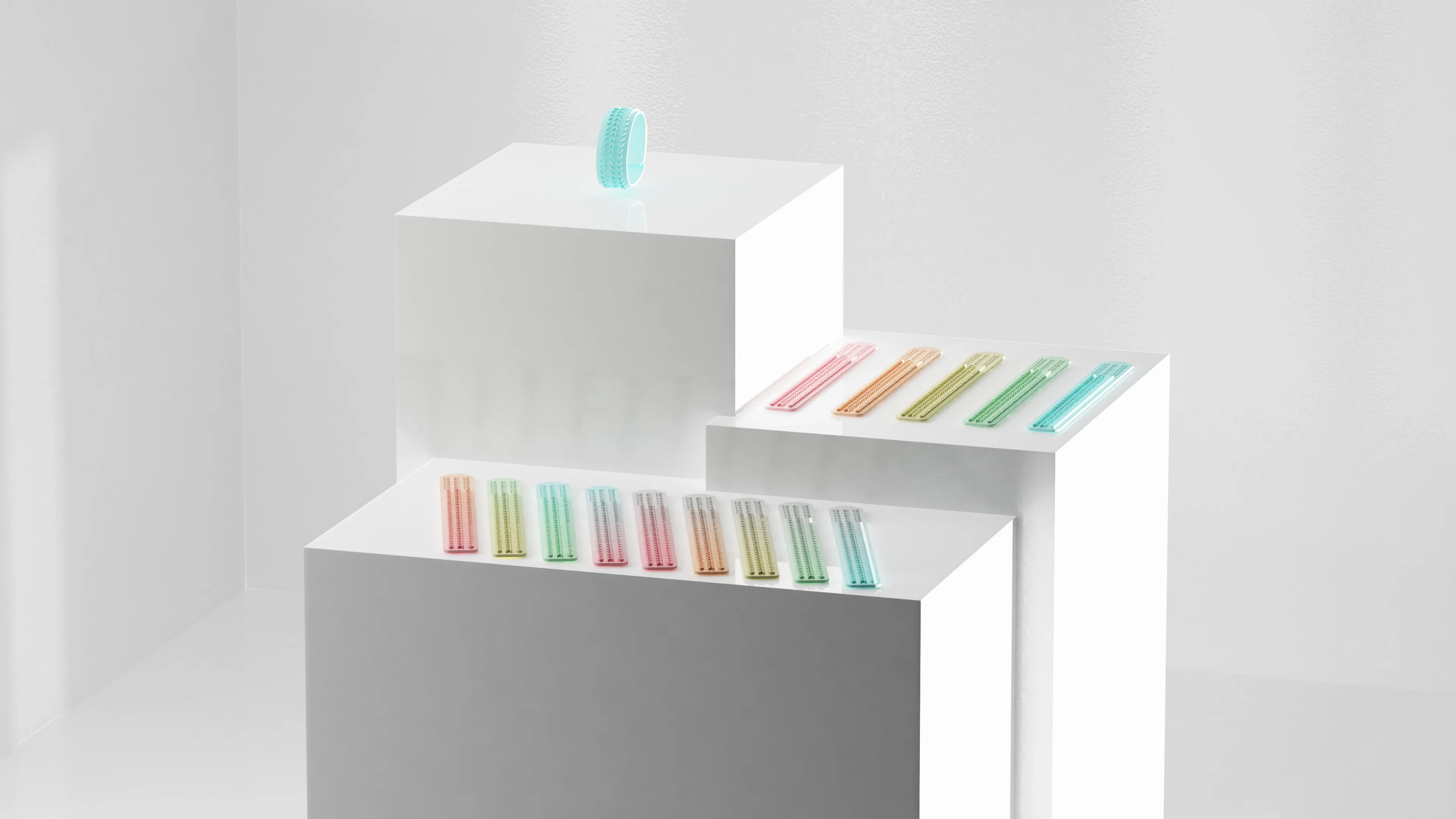
The TIR bracelet by Darius Fernandes is an example of how medical product development and design research can go hand in hand. By using innovative ideas and considering the needs and wishes of the user, a product concept has been created that is both functional and aesthetically pleasing. The use of color gradients and pastel shades allows users to express themselves through their choice of color combinations and adapt the product to their individual preferences. Overall, the TIR bracelet by Darius Fernandes shows how important it is to focus on the needs and wishes of the user when developing medical technology products in order to create a successful and satisfying product.
To find out more about the project, watch the video:
Frequently asked questions

